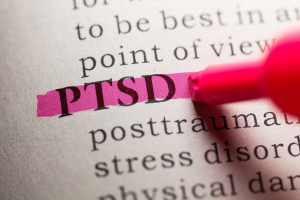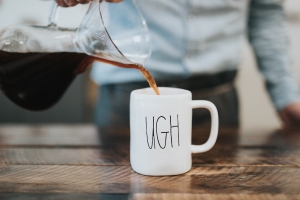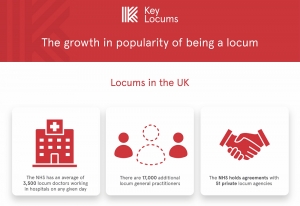Marketing
One of the most accurate assessments of the entire anti-vaxxer phenomenon written recently is that “it’s not really about medicine.” Instead it’s about something far more intangible and insidious, involving both conspiracy and mistrust: the truth. Who truly knows it, why it’s being withheld and the lengths people will go to for their own version.
It makes sense. The internet is there to validate any and all points of view, no matter how divorced from fact and common sense they may be. And, as a result, movements can form based on emotion and fear and in turn end up causing actual harm rather than preventing it. That is what has happened with the anti-vaxxers.
As The New York Times puts it, “Again and again, until blue in the face, medical authorities have debunked the renegade assertion that there’s a link between the M.M.R. vaccine, so named because it inoculates against measles, mumps and rubella, and autism. [Recently] a group of Danish researchers who looked at more than 650,000 children over 10 years announced that they had found no such association.
“Again and again,” they continue. “Until out of breath, those same medical authorities have also explained why making sure that all or nearly all children are vaccinated is so crucial: It creates a critical mass of resistance, known as herd immunity, that doesn’t give a disease the chance to spread.” And yet, what the World Health Organisation (WHO) has dubbed “vaccine hesitancy”, is now on their list of 10 global threats to health in 2019 with a 30% increase of measles cases globally.
There is a level of human nature in the midst of this, as no parent wants to inflict harm on their children. But, as one doctor put it, “If you lived in a world where there were hardly any car accidents, you’d think, ‘My baby cries and squirms whenever I strap her in; why should I use a car seat?’ But we do use them because we want to prevent something much worse than an unhappy child.”
The problem has grown most rapidly in the US; the UK still has faith in vaccines for the most part, with only one in every 11 people saying they don’t trust the medical procedure. However, Professor Heidi Larson, who leads the Vaccine Confidence Project at the London School of Hygiene and Tropical Medicine, says there is a growing lack of confidence in experts that can often result in a reaction against vaccines.
“Vaccines are kind of a canary for your relationship with government, with big business,” says Professor Larson. “There’s this growing movement of young mothers who are completely ‘pro-nature’. This identity, which is paleo, gluten-free diets, home births – they’re not even using contraceptives now they’re using an app – with that they’re adding in a vaccine-free childhood.” She sees it as misguided, rather than evil and she’s right. However, when measles, pertussis (more commonly known as whooping cough) and mumps, all of which can be deadly in small children, are beginning to return on a global scale, it is perhaps time for more drastic steps to be taken.
In the UK, these steps are being seriously considered as vaccination rates fell last year and the UK lost its official “measles-free” status after 231 cases were confirmed from January to March 2019. Health secretary Matt Hancock has floated the idea of mandatory vaccinations for schoolchildren in England, saying “When the state provides a service to people then it’s a two-way street. You have to take your responsibilities too.” However, the WHO makes no recommendation either for or against mandating vaccinations – it is up to countries to decide the best way of ensuring high rates, it says.
Whether this is the right move or not remains to be seen; there is a worry that mandatory vaccinations would lead to parents who disagreed simply not sending their children to school, depriving them of an education.
Whatever the solution is, the problem is growing, and something must be done to, once again, stop the spread of these totally preventable diseases.
Previously, doctors were more likely to take a “one size fits all” approach to the treatment and care of patients with a particular condition. However, as the NHS says, “We are all unique. Our health is determined by our inherent differences combined with our lifestyles and environment. By combining and analysing information about our genome, with other clinical and diagnostic information, patterns can be identified that can help to determine our individual levels of risk. From, developing diseases and detecting illness earlier it can also determine the most effective interventions to help improve our health; be they medicines, lifestyle choices, or even simple changes in diet.”
Although it fits in with the way the wellness industry seems to be going, it wouldn’t be accurate to claim that personalised medicine is a brand-new concept. Doctors have always made efforts to tailor treatments to individual patients. However, with new approaches like genome sequencing, data and informatics, and wearable technology we can now predict with a greater degree of accuracy than ever before on how a body will react to specific interventions.
The NHS is optimistic about its implementation: “Through the 100,000 Genomes Project, a ground-breaking and world leading initiative, the NHS is building partnerships with academia and industry to decode the human genome, in people with rare diseases and cancer. This will help to predict the future development of disease, to make a diagnosis where one has not existed previously and to identify treatments where possible.”
Some are a little more sceptical about the implications this could have for medicine and accessibility. There are concerns about inequality taking root in this new technology. As one article puts it, “People of European descent still account for 88% of the genomes in genome-wide association studies, which form a key source of information for genetic reference databases. As a result, the era of genetic engineering and personalised or precision medicine is poised to usher in new health inequalities.”
The future looks hopeful, however, with not-for-profit companies like Future Genetics working to reduce health inequalities in personalised medicine. They visit “community groups in churches, temples, and mosques, using the meetings as an entry point to discuss the societal value of participating in research.” The Human Heredity and Health in Africa (H3Africa) consortium, is doing something similar by having African scientists perform genetic studies within the continent.
The potential for personalised medicine is huge but so is the responsibility to make it ethical and accessible to all. As long as the NHS and private medical concerns are committed to inclusivity, it could drastically improve healthcare – and that can only be a good thing.
If you would like to register your interest in locum work then please email us at register@keylocums.com or call us at 0844 561 0950. We look forward to working with you soon.
Is There A Seasonal Demand for Locums?
In short, the answer to this question is yes. As temperatures soar and the NHS issues warnings about heat exhaustion and dehydration, it's easy to see how the time of year can affect health services. Weather extremes inevitably cause an influx of patients, especially among the elderly, as do festive periods where people indulge in heavy alcohol consumption. School holidays can also be a factor, as doctors who are parents take time off to spend with their families.
It makes sense therefore that locums experience different levels of demand depending on the time of year. When surveyed, approximately 85% of our candidates noticed a seasonal shift, both in hospitals and general practice. One commented that, “Permanent staff take time off for school holidays which require locums to cover them.” They added that “During festive periods there is also a higher demand for locums.”
Winter has traditionally been a time that puts a strain on the NHS and the healthcare system in general. Geriatricians, paediatricians and doctors who specialise in respiratory medicine, often find themselves seriously oversubscribed. The reaction to this is usually to bring in locums to relieve the pressure, increasing the number of roles open.
A pattern is then clearly established, as the seasons change every year (global warming hasn’t completely halted the onslaught of winter). This means that hospitals and practices bring on more locums seasonally as a matter of course, instead of waiting for flu season to hit. However, our survey showed another reason for the demand that has nothing to do with the changing seasons. One of our surveyed candidates asserted that “many staff are leaving permanent employment for flexible working patterns and better wages.” It’s evident that some doctors are opting to switch to locum work.
So, with people leaving more traditional, structured work environments, it perhaps makes sense then that locums will become more in demand – especially when taken in conjunction with the New Junior Doctor Contract limiting work hours.
Have you noticed a change?
If you would like to register your interest in locum work then please email us at register@keylocums.com or call us at 0844 561 0950.
We look forward to working with you soon.
How Much Do We Now Understand About PTSD?
Although considered unfortunate and reasonably serious, shell shock was mostly accepted as a reality of war. Physicians thought that it was linked to the literal explosions of artillery shells on the battlefields, hence its name. A more sinister undertone also developed that seemed to equate long periods of shell shock with weakness of character and this particular association became so bad that the moniker was banned by the British Army during the Second World War. Despite this, doctors continued to notice common symptoms in those returning from conflicts.
These days, PTSD sits as an umbrella term that covers these symptoms, which can range from nightmares and flashbacks, to feelings of isolation, irritability and guilt and sometimes insomnia. We also know that war is not the only trigger. Sexual abuse, physical violence, even witnessing a traumatic event can cause PTSD and put our brains into a constant, heightened fight or flight mode that can make day to day life well, frankly, unliveable. As with much mental illness, the symptoms are not the only aspect of the condition that makes life hard for sufferers. There is a huge amount of stigma and misconception that surrounds PTSD, even today.
We asked some of the experienced medical professionals who are part of the Key Locums family about what most people believe when it comes to PTSD - their responses were sadly similar: “You have to have been in the forces”, “It's something only old men suffer from”, “It’s either soldiers that suffer from it, or rape victims, that get it”. Another prevalent opinion that they encounter is that it isn’t that big a deal: “It only affects weak people”, “It is not as intense as the sufferer indicates that it is” and “It’s not real, people should get over it.” Finally, and perhaps most damagingly, several indicated that people with PTSD are regarded with fear as unstable and potentially violent.
As Raconteur puts it “Lack of knowledge, discrimination and stigma are the biggest obstacles to seeking, or providing, care.” Education, as ever, is key. It is true someone suffering from PTSD may have what is known as “hyperarousal” causing them to feel edgy and perhaps experience outbursts. However, treatment options such as trauma-focused cognitive behavioural therapy and antidepressants have been shown to help greatly. Labelling someone as a danger to society, further ostracising and isolating them when they are in fact the most vulnerable and deserving of care not only increases the stigma but can actually put lives in danger.
New treatments for PTSD are often reported in the press, with medical scientists searching some unlikely avenues for options. Most recently, ecstasy has been touted as a possible way to battle the condition. According to the report, “PTSD symptoms decreased after one session of MDMA together with psychotherapy," says Walsh, study co-author. “54% of participants no longer met PTSD criteria after two sessions and that there was also an improvement in their symptoms of depression.” Whether party drugs hold the key or other, more traditional forms of therapy, the first step is making sure that those who are suffering feel empowered to come forward and ask for help without fear of disbelief or disapprobation. Remember, PTSD comes in all shapes and forms.
How to Write an Effective CV
Your CV is often the first impression you make on a potential employer. It is also likely to be one of several they read for that job role, so you want to make sure yours stands out - for all the right reasons, of course. Here we will look at some of the pitfalls to avoid, aspects to highlight and ways to format your CV to ensure the first impression you make is a good one.
What is a CV?
The dictionary definition is simple, a CV (which stands for curriculum vitae) is ‘a short written description of your education, qualifications, previous jobs, and sometimes also your personal interests, that you send to an employer when you are trying to get a job.’ Even more simply put, it is you on a piece of A4 paper - the highlights, at least.
What should I include?
A focused, uncomplicated CV is always best as recruiters and employers do not want to have to sift through unnecessary details to get to the relevant information. The fact that you were a prefect in secondary school is not something they are likely to take into account.
Firstly, some things avoid:
-
Photos - with very few exceptions, employers should not be hiring you based on what you look like
-
Crazy colours - it may seem like a good way to stand out but actually just comes across as unprofessional
-
A CV longer than two pages - it may be hard but keeping your CV to one page means you are forced to get rid of any excess information
-
Age, date of birth or marital status - it is illegal for employers to ask for this information and unnecessary to supply it
Clichés - try to abstain from phrases like ‘teaching is my passion.’ It may be true but they will have read it a thousand times
Instead, you should:
-
Use a simple font such as Calibri, Arial or Helvetica in between 10-12pt font - this makes it clear and easy to read
-
Use A4 paper and only print on one side
-
Utilize bold headings - this shows the separate sections
At the top of your CV in the first section, you should provide your name, professional title, and your contact details. You don’t actually need to write ‘CV’ or ‘curriculum vitae’ at the top, let your name be the heading.
Next, a mini personal statement. According to the Independent, ‘on average recruiters spend 8.8 seconds looking at your CV’, so you have to give them a reason to read on. Include a few sentences about you, explaining:
-
Who you are
-
What your career goals are
-
Why you would be a good fit for the job
This can be invaluable and mean the difference between getting an interview and your CV being relegated to the ‘no’ pile. Don’t go on too long though - you only have one page.
The section after this should detail your work experience. This should be listed in reverse chronological order, with your most recent, relevant job first. You want to demonstrate development, so it is important to include the responsibilities you had and what you achieved in each. You should also include your job title, the company name and the dates that you worked in the role.
Jobs should be followed by education, also in reverse chronological order. Remember to include the names of institutions, and the dates you attended them and then lay out the qualifications and grades achieved underneath. This is particularly important for teachers, so make sure to include everything relevant.
Finally, skills and achievements. As we mentioned earlier, it may be tempting to list all your accomplishments here but try to keep it to those relevant to the job you’re applying for and do not exceed five. Some good examples of useful skills are languages and IT programs you have mastered.
You won’t need references at this stage in proceedings, but you can always add in a line indicating that any references that employer needs are available on request. A CV is an incredibly useful tool in job hunting and, whether or not you are actively looking for something new, it is always a good idea to keep it updated.
If you are struggling to know what information is useful and what isn’t, try speaking to your recruiter. They are likely to be familiar with the employer and know what they’re looking for. To speak to one of our recruiters, call us on 0208 506 6740.
This February, from the 18th to the 24th, we observe OCD Week of Action. OCD, or obsessive-compulsive disorder, is a mental health condition that causes sufferers to have obsessive thoughts and exhibit compulsive behaviours. Most people will have heard of the disorder but there is much misinformation that surrounds it. In honour of the Week of Action, we have put together a few facts about the condition and the realities of living with this particular mental health issue.
Liking things neat doesn’t mean you have OCD
Although a preoccupation with cleanliness is a common sign of OCD, liking things neat and clean does not necessarily mean you have the disorder. A cleanliness complex can be a personality trait - the main difference being that you still have control and can choose what you do. As Jeff Szymanski, PhD, executive director of the International OCD Foundation puts it, “If you have obsessive-compulsive disorder, you’re doing it out of unrelenting debilitating anxiety.”
In addition to this, although fixating on cleanliness is common with OCD, it’s not the only compulsion - some people with OCD won’t have it at all. Other compulsions include:
-
Repeating routines
-
Hoarding
-
Being afraid of something bad happening
-
Checking over and over again for mistakes
OCD is not caused by childhood trauma
In popular culture, characters with OCD are often shown to have suffered in their formative years, a fact that seems to cause their condition. This is actually not the case, although research has started to show that OCD does run in families and, as a result, may have something to do with genetics. However, although traumatic events have been shown to spark OCD, these cases are not specifically childhood-related.
Stress is also often blamed for OCD and, although it can exacerbate it, stress is not the root cause. There are a few other accepted causes, as well as genetics and trauma, including differences in the brain like high or low levels of serotonin. It can also be triggered by specific personality proclivities; according to the NHS website, if you are inclined to be ‘a neat, meticulous, methodical person with high personal standards, you may be more likely to develop OCD, as may those who are generally quite anxious or have a very strong sense of responsibility for themselves and others.’
OCD is not as uncommon as you may think
An estimated 1.2% of the population in the UK have OCD, or 12 out of every 1,000 people. However, despite this, the number may actually be much higher due to the hundreds of people who choose to suffer in silence. The stigma surrounding obsessive-compulsive disorder is significant and those who have it may feel ashamed or label themselves as ‘mad’. This is totally incorrect - OCD is a mental health condition like any other and is not the fault of the person who has it.
Although anxiety may be a condition that is typically associated with women, in actual fact, OCD affects men, women, and children and of all ethnic, racial, and economic backgrounds equally. Symptoms can begin at any time but commonly manifest either between 10 and 12 or between late teens and early twenties.
OCD is treatable but not curable
If you have OCD, there are various treatments available. According to the NHS website, these are:
-
psychological therapy – usually a special type of cognitive behavioural therapy (CBT) that helps you face your fears and obsessive thoughts without "putting them right" with compulsions
-
medication – usually a type of antidepressant medication called selective serotonin reuptake inhibitors (SSRIs) that can help by altering the balance of chemicals in your brain
To get started with either of these options, you will need to book an appointment with your GP or directly refer yourself to a psychological therapies service. OCD can also isolate sufferers socially, so finding a support group can also make a huge difference:
Coined by a tutor at the Centre for Lifelong Learning, a Further Education centre attached to Cardiff University, it is said to have been calculated using a combination of factors including: weather conditions, debt level (the difference between debt accumulated and our ability to pay), time since Christmas, time since failing our new year’s resolutions, low motivational levels and feeling of a need to take action.
This information was released in a press release which was commissioned and distributed by Sky Travel, a holiday company. It gained traction in the press, clearly resonating with a public who were suffering from a combination of Christmas fatigue and SAD (seasonal affective disorder) – it then took on a life of its own. And it makes sense. January always seems to bear a bit of a pall as everyone recovers both financially and physically from the festive season. This year, meteorologists are predicting one of the coldest Januarys on record, which also doesn’t help.
In addition to this, there is a sense of austerity and martyred earnestness as people swear off alcohol or smoking or sometimes entire food groups for the New Year. The psychology of resolutions is a bit of a mixed bag; making the choice to break a bad habit or take up a good one is obviously a positive thing to do, but often we set ourselves such lofty goals that we end up feeling like failures when we inevitably falter. So, January gets a bad rap. But is Blue Monday actually a psychological reality?
In short, no. At best it is pseudo-science used by a corporation to sell holidays and, at worst, it’s something a little more insidious, preying on the insecurities we have about how happy we are supposed to be and that each new year must be the best one ever. However, if you are suffering from poor mental health at this time of year, there are several useful resources to help cope with negative feelings and impulses, which we have listed below.
Blue Monday is what you make it. If you want to wallow, you can - a bit of pessimism never hurt anyone - but, who knows? It could be the best day of your life.
Samaritans (116 123) operates a 24-hour service available every day of the year. If you prefer to write down how you’re feeling, or if you’re worried about being overheard on the phone, you can email Samaritans at jo@samaritans.org
Childline (0800 1111) runs a helpline for children and young people in the UK. Calls are free and the number won’t show up on your phone bill.
PAPYRUS (0800 068 41 41) is a voluntary organisation supporting teenagers and young adults who are feeling suicidal.
Depression Alliance is a charity for people with depression. It doesn’t have a helpline but offers a wide range of useful resources and links to other relevant information. http://www.depressionalliance.org/
Students Against Depression is a website for students who are depressed, have a low mood or are having suicidal thoughts. Bullying UK is a website for both children and adults affected by bullying. http://studentsagainstdepression.org/
The Sanctuary (0300 003 7029) helps people who are struggling to cope - experiencing depression, anxiety, panic attacks or in crisis. You can call them between 8pm and 6am every night.
Ways to Recharge After a Long Shift
Shift work can be draining. As a locum, you might find yourself facing long hours, sometimes at night, in high-stress situations. It's easy to get burned out and, as well as being bad for your mental health, it can also lead to mistakes. When an office worker makes an error, it’s probably not going to be that serious. When a doctor makes an error, it’s could have much more weighty consequences.
We have put together a few ways to relax and unwind after your shift to help you feel better rested and more equipped to take on the day (or night).
Sleep
This may seem like a bit of a no-brainer but it’s often the first thing that people sacrifice when they’re busy or under pressure. The average person needs between seven and nine hours to function at the highest level. Missing even one hour of sleep, even though you may not consciously notice it during the day, actually compromises your cardiovascular health, energy balance, and ability to fight infections. It also reduces response rates - not ideal if you’re working in a situation that requires split-second decision-making like A&E.
Sleep deprivation may sound like an extreme term to describe missing a few hours’ sleep but it can have a profound effect, so why not try an app like Sleep Cycle to help you get some proper rest? It uses your microphone to track your sleep patterns and wakes you in the lightest phase of sleep so you're not groggy.
Meditation
You don’t want to spend your whole day off in bed sleeping but you still feel too tired to do anything. Meditation is a way to relax and refocus without staying hidden under the duvets for hours. It has been shown to reduce stress, control anxiety and lengthen your concentration span. It is also thought to improve sleep, so if you find getting your seven to nine hours a challenge, meditation may be the answer.
For many of us, silencing the voices in our heads can be tricky. Meditation can feel silly or self-defeating the first time you try it but never fear, there is help to be had. Apps like Headspace offer guided meditation that fits around your life. You can focus on an area that is worrying you, like anxiety or sleep, and it also offers ‘SOS exercises’ if you ever start to feel overwhelmed.
Sports
When you’re tired, often the last thing you want to do is run around - especially if you’re not particularly sporty. Exercise increases blood flow and that creates endorphins, which in turn gives us energy. It may seem counterintuitive, but when you feel your most drained is when you should probably be lacing up your trainers and heading outside.
If you really aren’t a ‘leggings and sweat-band’ kind of person, a simple walk can do the trick. Walking for as little as 30 minutes every day can reduce your risk of heart disease and stroke and also improves self-perception and self-esteem, mood and sleep quality, as well as reducing stress, anxiety and fatigue. Studies have shown that active people are 30% less likely to suffer from depression, so even if it’s just a little walk around the park, make sure you get out at least once a day.
Cooking
Cooking has several benefits that can help you to reboot mentally after an exhausting shift. First and foremost, you get to eat food at the end of it. However, there are psychological benefits to cooking that you may not be aware of.
There are some people who will suggest practising mindfulness in the kitchen; considering the texture, smell and look of the ingredients before adding them into the mix. This may be a little much for some of us, but the ritual of preparing a meal, following steps and having made something yourself gives a sense of accomplishment and satisfaction that ordering in from Deliveroo distinctly lacks. The food you cook is far less likely to have hidden ingredients and additives, so will be better for your overall health anyway.
Bath
This last suggestion doesn’t have much science to recommend it - it’s just relaxing. The addition of Epsom Salts and a 20-minute soak in peace is restorative and helps you to unwind in a private calm space. It has also been suggested that it can help you get to sleep if you do it in the evening before bed. Just throw on a podcast, lay back and relax.
To bring you up to speed we have compiled an overview of some of the latest, most ground-breaking technology in medicine today.
Endoscopic robots
Munich-based medical technology manufacturer Medineering has announced that an endoscopic robot developed by them has had its first clinical use. After gaining the CE approval for the endoscope robot in February of this year, different clinical procedures in university hospitals in Germany and northern Italy have reported successes when using this new tech. Historically, whilst performing endoscopic surgery, a surgeon or surgical assistant is required to move and hold the endoscope manually, which can limit performance and the development of surgical techniques.
Professor Francesco Doglietto from the Department for Neurosurgery of the University Hospital Brescia, Italy used the Medineering robot during transnasal skull base surgery: “The robotic solution is of great benefit for doing complex surgery in anatomical regions, where a clear and stable image without tremor is needed. With its precise movements, the robot delivers exactly the endoscope image I need to see, and I still have two hands available for instrumentation.”
Professor Stefan Mattheis, vice director of the ENT department of the University Hospital Essen used the robot for surgeries which are normally unsuitable for the endoscopic technique due to the current limitations: “The Medineering solution has the potential to expand the applications of existing surgical endoscopic techniques” he said.
“We deeply appreciate the passion and enthusiasm of our clinical partners and we are looking forward to pushing surgical robotics forward together,” said Dr Maximilian Krinninger, CTO of Medineering.
NHS collaborates with UK Space Agency
NHS England is working with Innovate UK to invest a £100 million grant to improve connectivity through satellite, with the aim of sharing healthcare information. Apps that utilise satellite technology could also be used to give personalised risk assessments of sun exposure. Apps such as Happy Sun could form part of a patient’s package of care in the coming years.
NHS England’s National Clinical Director for Innovation, professor Tony Young said, “In the NHS’s 70th year we are using satellite technology to revolutionise breast cancer screening by beaming scans back to hospitals from mobile screening units next to shopping centres and speeding up diagnoses.”
UK Space Agency Head of Applications, Emily Gravestock said, “Technology from space is already improving our daily lives, and health is no exception. The NHS breast screening vans are a great example of how Britain’s world-leading space industry has come up with an innovative solution to support vital public services. As our space sector continues to grow, with support the support of Government’s Industrial Strategy, these opportunities will only increase.”
Sensor tech helps asthmatics to inhale ‘correctly’
First Sensor, the manufacturer of sensor components and systems have been exploring how their technology can be used to accurately gauge pressure via sensors with a wide dynamic range to enable SmartAir’s Airbrio system to teach asthma sufferers to use their inhaler correctly.
Essentially, the Airbrio product, compatible with many asthma spacer devices and metered does inhalers (MDIs) lets users receive real-time feedback by way of red/green lights illuminating during use, helping them to improve their inhalation technique, and also informing them when they have emptied the spacer.
To complete the management system, users are encouraged to download the supporting app. The Airbrio mobile app allows for the upload and presentation of essential data from Airbrio, along with enabling users to engage with valuable tools that support their asthma management.
Regenerative nanodevice (Tissue Nanotransfection (TNT))
It is claimed the technology – from researchers at The Ohio State University Wexner Medical Center and Ohio State’s College of Engineering – may be used to repair injured tissue or restore function of aging tissue, including organs, blood vessels, and nerve cells.
Known as Tissue Nanotransfection (TNT), this is a science fiction fantasy realised. TNT injects genetic code into skin cells, turning those skin cells into other types of cells that are needed for treating diseased conditions. It uses a small electrical current to transfer DNA into pores in the cellular membrane.
“By using our novel nanochip technology, injured or compromised organs can be replaced. We have shown that skin is a fertile land where we can grow the elements of any organ that is declining” said Dr. Chandan Sen, director of Ohio State’s Centre for Regenerative Medicine & Cell Based Therapies, who co-led the study with L. James Lee, Professor of Chemical and Biomolecular Engineering with Ohio State’s College of Engineering in collaboration with Ohio State’s Nanoscale Science and Engineering Centre.
If you’re currently looking for your next career move in medical, either locum or permanent, then get in touch with Key Locums to explore the latest opportunities in your field. You can call us on 0121 399 0100 or email us directly.
Featured jobs
LocumNurse PractitionersMerseyside Details 02/01/2026 Registered Nurse (Band 5)(General or A&E)
LocumNurse PractitionersMerseyside Details 01/01/2026 Paedaitrics Reg Nurses (RCN) - Band 5 - Nottingham
LocumNurse PractitionersNottinghamshire Details












